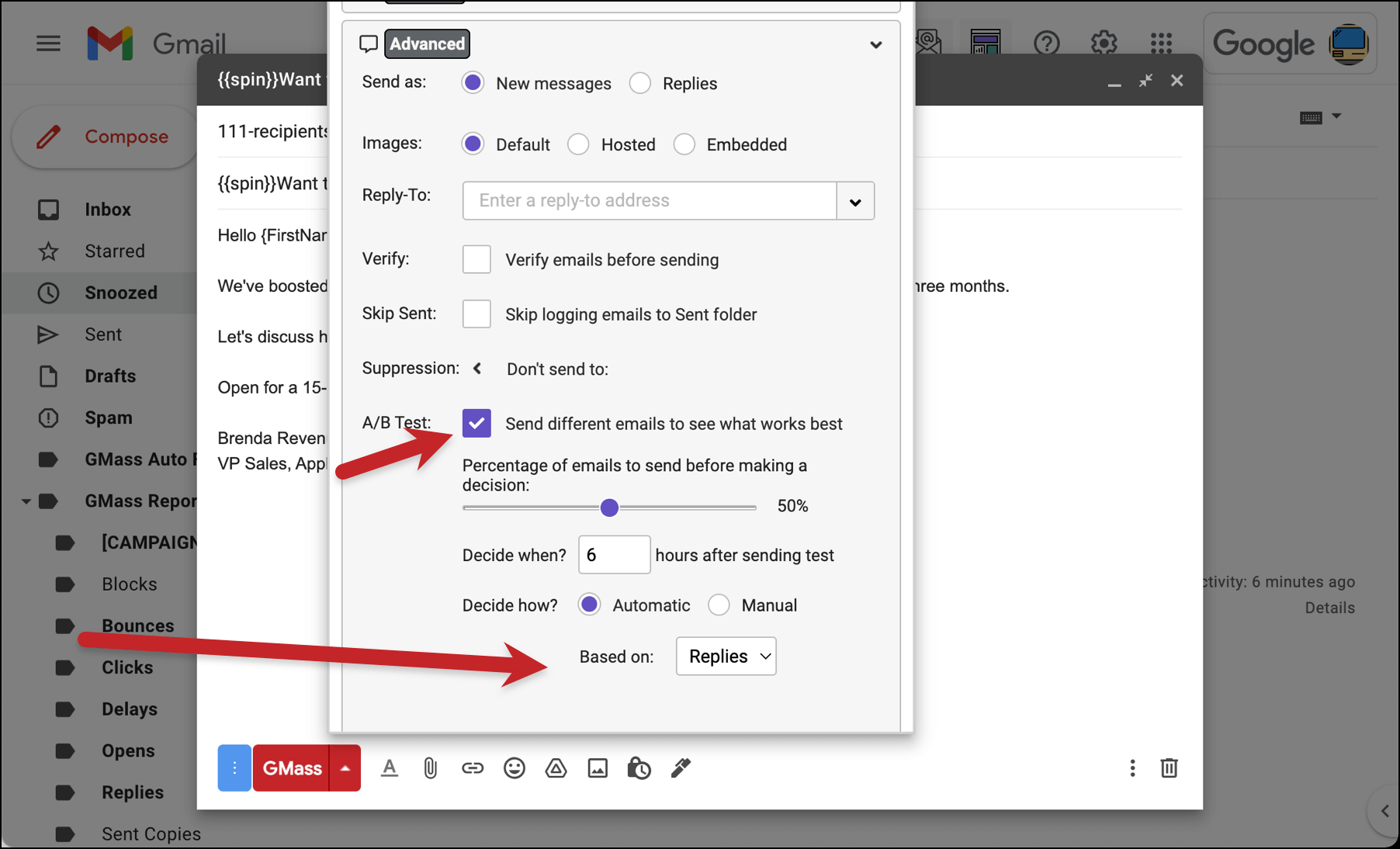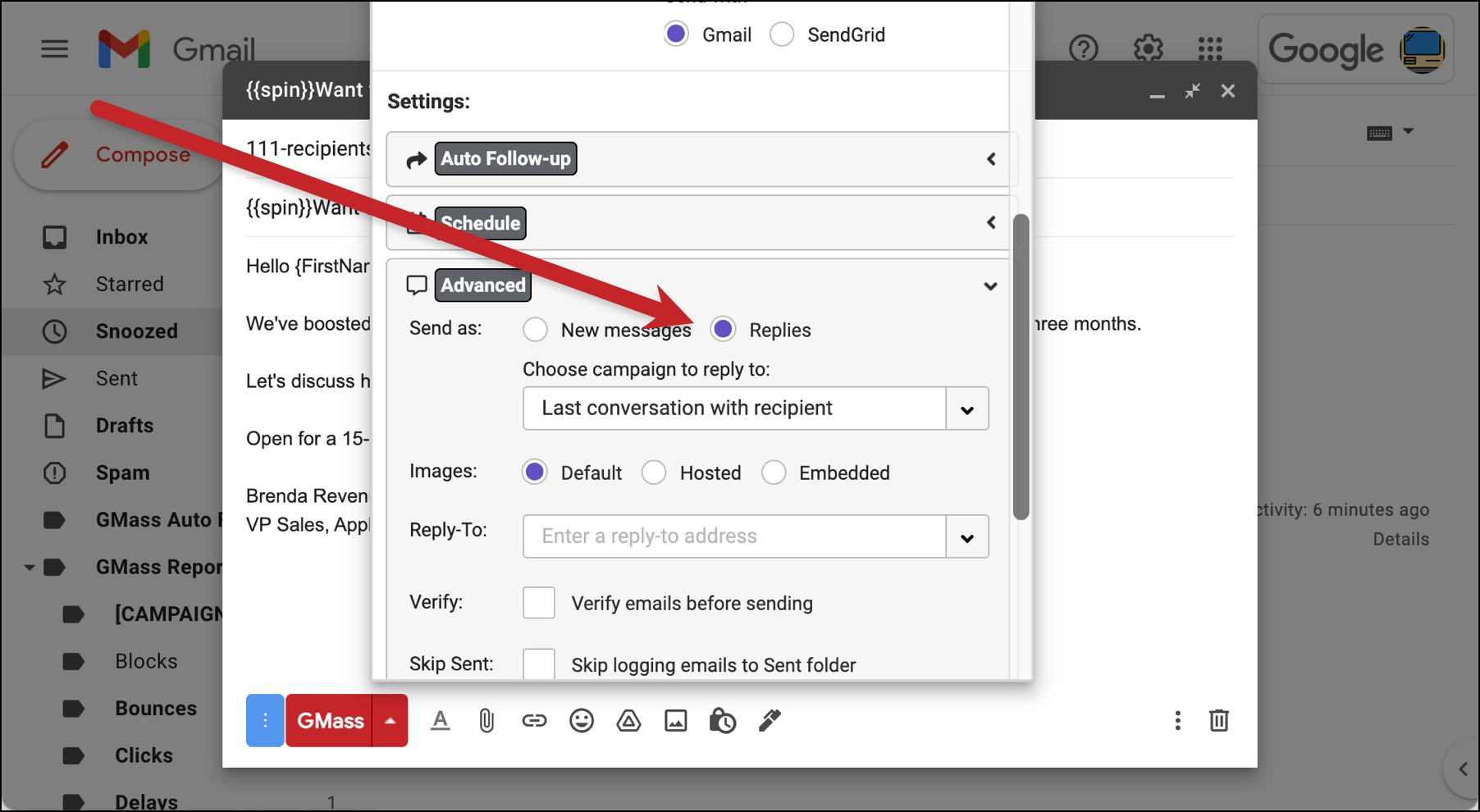
Apple Mail Privacy Protection is here to mess with your open rates. At least a little bit.
A quick dive into the back story of Apple Mail Privacy Protection…
In September 2021, Apple released iOS 15 for iPhones and iPads. The next month, they introduced macOS Monterey for computers. And both releases featured Apple’s new Mail Privacy Protection in their Mail app — with privacy turned on as the default.
With Mail Privacy Protection, whenever a Mail app user receives an email, Apple pre-loads a version of that email to their own proxy servers sometime within a few minutes or a few hours. That triggers the open tracking pixel for that email.
Which means: If you send emails to people using Apple Mail, your open rates will be 100% from those recipients, regardless of whether or not they actually go on to open the email. Apple, in essence, “opened” the email for them behind the scenes.
The ramifications extend beyond open rates as well. You also won’t be able to get reliable data on open times, device data, or IP address-based geolocation from those opens.
For cold emailers and email marketers who rely on open rate data for A/B testing, measuring the efficacy of campaigns, and improving future campaigns, this isn’t great news.
After all, it’s hard to A/B test which subject line is getting better open rates if Apple is obfuscating the data. It’s hard to send a hyper-specific follow-up campaign to people who opened an email but didn’t reply if opens are inaccurate.
Open rates are a key metric for pro email users… and now they’re less reliable than before.
So what’s a cold emailer to do?
Step one: Don’t panic. Step two: Think about some changes to the ways you interpret and rely on open rate data. We dug into Apple Mail Privacy Protection to see what kind of impact it’s really having on open rates. We also put together some strategies you can employ now that open rates aren’t quite as reliable as they used to be.
GMass Is the First Cold Email Platform to Show You Your Open Rates With and Without Apple’s False Opens
First and foremost — we want your stats to be as accurate as possible. So as of November 2022, GMass is the first cold email platform to show you open rate stats with and without Apple’s false opens.
Your GMass campaign reports identify Apple’s false opens and break them out so you can see your true open rate — and better gauge the effectiveness of your subject line and other open-related campaign elements.
The Effect of Apple Mail Privacy Protection on Open Rates, Based on 250K+ GMass Emails
We wanted to see what kind of a difference Apple’s new anti-tracking open rate busting is having on GMass users.
So we took a look at a random sample of GMass campaigns from:
- May 2021, a few months before Apple Mail Privacy Protection came into existence.
- And May 2022, after iOS 15 and macOS Monterey were both on the market long enough for widespread adoption.
Based on around 250,000 campaigns (with a minimum of 50 recipients per campaign), the verdict is…
- May 2021 average open rate: 16.73%
- May 2022 average open rate: 19.01%
That works out to around three extra email opens in the average campaign.
So no, Apple Mail Privacy Protection isn’t causing a seismic shift in open rates — at least not on this large of a scale.
However, we can see a more notable difference when we look at other metrics.
- May 2021 average click-to-open rate: 7.87%
- May 2022 average click-to-open rate: 5.97%
We see an even larger drop on reply-to-open rate.
- May 2021 average reply-to-open rate: 7.03%
- May 2022 average reply-to-open rate: 3.28%
Apple Mail Privacy Protection is absolutely not the only factor that could be behind those drops. GMass users didn’t send identical emails to identical lists in May 2021 and May 2022; we can’t control for the content of the emails. Maybe lots of people were nailing their prospecting and their calls-to-action in May of 2021 and weren’t quite as sharp in May of 2022. Could be.
But if Apple’s changes played any role — which they likely did — those differences are eye-opening enough that it’s worthwhile for you to take action.
Why isn’t Apple Mail Privacy Protection having a huge effect on overall GMass open rates?
There are a few likely reasons why Apple’s privacy changes did not lead to a massive swing in GMass open numbers.
- B2B emails. While people use GMass for tons of different professional and personal reasons, usage does skew B2B. While some people check their business email using the Apple Mail app, there are lots of other email apps at play (especially on desktop). That includes corporate email software, web email interfaces, and other mobile mail apps.
- International scale. According to StatCounter, iOS has a 57% mobile market share in the U.S. and macOS has a 27% desktop market share. Worldwide, it’s a very different story. iOS has a 27.8% mobile market share globally and macOS has a 15.7% market share. While GMass is a U.S.-based product with a sizable U.S. user base, it’s also quite popular globally. (And, of course, U.S.-based users are often emailing people all over the world.) That means lots of email recipients in areas not so Apple-heavy.
So… what do we make of these year-to-year differences?
According to Litmus’s latest data, more than 58% of emails are now opened with Apple Mail. As adoption increases, open rate numbers will grow less reliable.
But even stepping outside of the Apple bubble, more aggressive privacy measures aren’t going anywhere.
These privacy changes are great for PR and marketing. (Cynically, it also gives the huge tech companies even more control and targeted advertising power.)
So other tech behemoths will likely introduce their own, similar privacy protection measures. The winds are blowing toward privacy. Which is a good thing on a macro level… albeit one that’s frustrating for all of us who rely on non-invasive analytics like open rates.
It’s wise to start taking measures to blunt the effect of unreliable open rates now — for the sake of both the present and the future.
6 Cold Email Strategies in the Mail Privacy Protection Era
Open rates are important, absolutely. But they’re just the first step in the cold email process. In virtually all cold email scenarios, the ultimate action you want someone to take isn’t opening your email — it’s clicking or replying.
And clicks and replies are still reliable analytics; there’s nothing in Apple’s new privacy measures that messes with those.
So here are six strategies you can employ to bias toward clicks and replies now that Apple Mail Privacy Protection is affecting the veracity of open rates.
A/B test subject lines on clicks or replies
We’ll start here by talking about one of the top uses for open rates: A/B testing on subject lines. It’s hard to know which subject line is really yielding more opens when Apple is automatically “opening” your emails.
So it’s time to consider A/B testing your subject line on clicks or replies.
After all, the goal of a good subject line is to get someone to open the email… but then also to take an action inside of your email. An effective subject line entices an open — while also properly setting expectations and/or building excitement for what’s inside the email.
With A/B tests going forward, rather than selecting the “winning” subject line on opens, select it based on your desired action (click or reply).
Test out two subject lines with the same email body. See which subject line brings in more action (clicks or replies), then use that subject line for the rest of your campaign.
One difference here: You may need to use larger test samples for this to work. If you’re used to (for example) testing subject lines on 30% of your audience, then sending the winner to the remaining 70%, you may need to bump it up to 50%-50%. Why? Clicks and replies are less frequent than opens, so you’ll need that bigger sample to see a significant difference.
Setting up an A/B test for subject lines using click or replies as the deciding metric
To set this up in GMass, first create your campaign as you normally do in the Gmail compose window. Use GMass’s spintax in your subject line to set up the different subject line variations.
Head into the GMass settings for the campaign. In the Advanced section, check the box for A/B testing.
Set the percentage to 50%. You also may want to add a longer testing window here; I went with six hours.
GMass will automatically send the winner to the remainder of your list of you choose “Automatic.” I chose Automatic, then set my metric to replies.
Now when you send the campaign, you’ll optimize your subject line based on replies (not the standard measure of opens).
Send campaigns as replies to your last email to blunt the impact of subject lines
As we just covered, one of the primary situations where open rates come into play is in subject line testing. So you could do what we described and A/B test subject lines on other metrics.
Or you could take steps to minimize the impact of subject lines at all.
One unique GMass feature cold emailers love is the ability to send new campaigns as replies to previous emails.
With this feature, GMass will look for your last email with each person on your list and send your new campaign as a reply to that prior conversation.
It’s one of those cold email features that more closely simulates how you’d reach out to someone individually. And for our purposes here, it eliminates the need to worry about subject lines.
Now… this obviously won’t work if you’re doing cold outreach to people you’ve never emailed before. In those cases, they will get your new email with its new subject line. But when you’re reaching out to prior contacts, when you’re following up, and when you’re re-marketing to warm leads — sending a new campaign as a reply is a great option.
Setting up “send as replies to a prior campaign” in GMass
To send a new campaign as replies in GMass, compose your new campaign in the Gmail campaign window.
Then, in the GMass settings, go to the Advanced section. Choose to Send as “Replies.” You can send as a reply to your last conversation with each recipient, or as a reply to a previous GMass campaign you once sent.
Use the GMass Tracker Blocker to make sure not to further skew stats
Apple is messing around with the accuracy of your open rate data. Might as well not make things worse.
The GMass Tracker Blocker is a Chrome extension (separate from the GMass Chrome extension) which you can use to make sure you aren’t causing false opens on your own campaigns.
There are lots of ways you can trigger false opens: Opening an email in your Sent folder, checking a bounce notification, creating drafts of your campaign then opening one for editing, and more.
The Tracker Blocker blocks the GMass tracking pixel from firing when you open emails. That way, nothing you do will skew your stats.
This won’t undo or reverse anything Apple is doing. But it’s a proactive step you can take to make sure you aren’t joining with Apple to skew your open rates.
You can download the Tracker Blocker from the Chrome Web Store.
Set up a custom tracking domain (to solidify your click tracking)
In the Apple Mail Privacy Protection world, clicks become a more important metric — since we know we can trust them.
And that might be tough for you… because we know some cold emailers love to turn off click tracking.
One of the reasons: If you’re using a shared click tracking domain, your email deliverability can be affected by other people using that same domain.
And if you don’t have a custom tracking domain, you will be sharing your tracking domain. We work vigilantly here at GMass to keep our tracking domains as pristine as possible — but still, shared is shared.
So rather than turning off click tracking, you can set up your own custom tracking domain. That way, you aren’t sharing the click tracking domain with any other emailers who might bring down your reputation.
Plus, a custom tracking domain is great for branding (and for making your email seem one-on-one) — when someone mouses over the link, they’ll still see your domain (or a similar domain).
Setting up a custom tracking domain in GMass
We won’t go into the step-by-step process of changing DNS records here; you’re can read up on that in our walkthrough of setting up a custom tracking domain in GMass.
Essentially, it’s just a two-step process:
- Create a special CNAME record with your domain provider, web host, or other DNS provider.
- Add your custom tracking domain to the GMass dashboard.
End auto follow-up sequences on reply or click, not open
When you’re setting up auto follow-up sequences in GMass, you choose what recipient action ends the sequence: Opening one of your emails, clicking, or replying.
In the Apple Mail Privacy Protection world, it’s best to choose “No Click” or “No Reply” rather than “No Open” for the end trigger. Since Apple is automatically opening emails, your sequence would stop to all Apple users if you choose to use Opens as the criteria for whether to continue sending or to stop.
Setting up auto follow-up sequences that end with a click or a reply
When you’re setting up an auto follow-up sequence in the GMass settings, there’s a dropdown box for each email where you specify the conditions for sending. Choose to send the email if there’s “No Click” or “No Reply” — not “No Open.”
Segmenting for follow-up campaigns on open-based stats is still fine
For our last strategy, we’ll look at a spot where you can continue to rely on open rate data.
If you’re not familiar with GMass’s segmentation feature, you can create new campaigns based on recipients’ action (or inaction) in a prior campaign. For instance, you can create a new list of everyone who replied to a prior campaign, who clicked, who opened, who opened but didn’t reply, and more.
Even though opens are a little less reliable now with Apple Mail Privacy Protection, the segmentation options should all still be in play. Here are some suggestions for different segments you can use to work around affected open rates.
- If you want to reach out again to people who didn’t open your email, instead of sending to Didn’t Open, segment by Didn’t Click or Didn’t Reply. That way, you’re still reaching out to everyone who didn’t take your desired action (some didn’t open, some opened but didn’t click or reply).
- If you want to reach out to people with Opened but didn’t click or Opened but didn’t reply, you can still likely use those segments. Yes, you’ll include some people who were false opens from Apple. But those were qualified, targeted prospects to begin with, right? So ostensibly you reached out because they were a good potential lead. It’s alright to reach out to them this second time.
- The same logic applies if you want to send to everyone based on the Opened segment. Yes, you’ll hit some people who were false opens from Apple. But since they’re qualified prospects, your new email (with its new pitch/offer) should still be relevant.
Apple Mail Privacy Protection: Takeaways for Cold Emailers
Apple Mail Privacy Protection is here for good — and with it, the accuracy of open rates is now in question.
While we haven’t seen a massive difference in open rates at GMass, there’s still some difference. And since the future is trending toward even more privacy, now’s a good time to make some tweaks to your strategies.
Our recommendations for cold emailers are:
- A/B test your subject lines by clicks or replies, not opens.
- When you can, send new campaigns as replies to prior conversations with contacts (to blunt the need for subject lines and subject line testing).
- Use the GMass Tracker Blocker so you don’t further skew your open rates as you work on campaigns.
- Set up a custom tracking domain to solidify your click tracking numbers.
- End your auto follow-up sequences on a click or reply, not an open.
- And continue to segment your follow-up campaigns on opens — but take into account that some of the opens might not be “real” opens.
You can implement everything we’ve discussed in this article easily in GMass. Plus, GMass is the first cold email platform to filter out Apple’s false opens in reports. If you’re not a GMass user yet, you can get started for free by downloading the extension from the Chrome Web Store.
Only GMass packs every email app into one tool — and brings it all into Gmail for you. Better emails. Tons of power. Easy to use.
TRY GMASS FOR FREE
Download Chrome extension - 30 second install!
No credit card required








